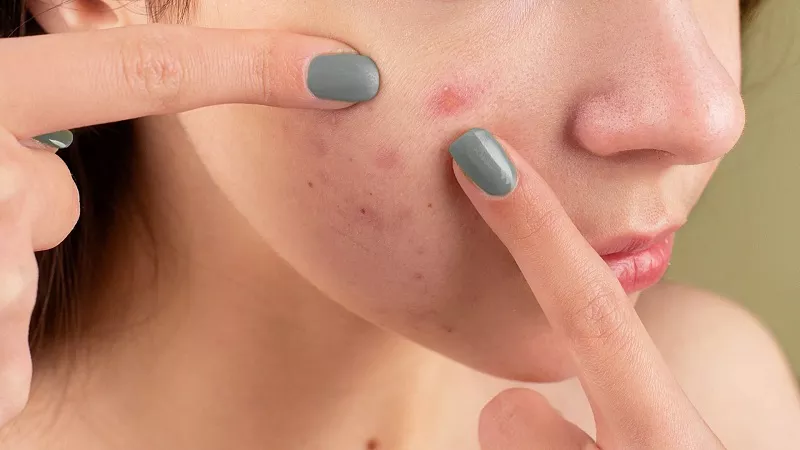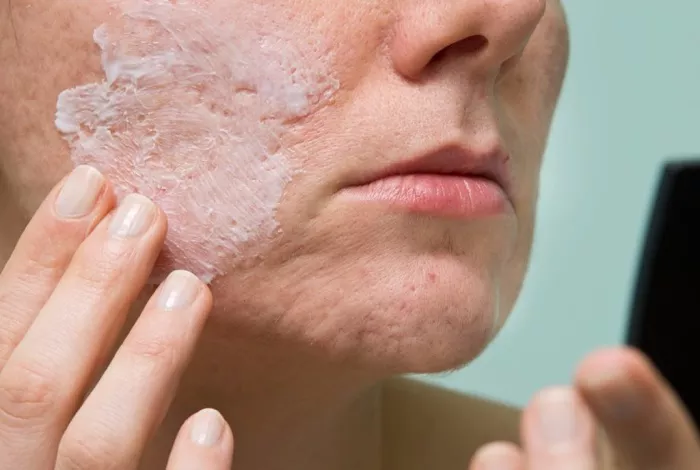Pimple marks, often referred to as acne scars, can be a source of frustration and insecurity for many individuals. These stubborn blemishes can linger long after the pimple itself has healed, leaving behind visible reminders of past breakouts. While there are various skincare products and treatments available in the market, one unexpected contender in the battle against pimple marks is petroleum jelly. In this article, we will explore the potential of petroleum jelly in addressing pimple marks, examining its properties, usage, and effectiveness.
Understanding Pimple Marks
Before delving into the role of petroleum jelly in pimple mark removal, it’s crucial to understand what pimple marks are and how they form. Pimple marks, or acne scars, can take different forms, including red or brown discoloration, pitted scars, or raised keloids. These marks are the result of the skin’s natural healing process after a pimple or acne breakout. When the skin is damaged, it initiates a repair process that can sometimes lead to the formation of scar tissue, resulting in the persistent marks we want to address.
The Role of Petroleum Jelly in Skincare
Petroleum jelly, commonly known by the brand name Vaseline, is a semi-solid mixture derived from petroleum. It has been a staple in skincare routines for decades due to its occlusive properties. Occlusives are substances that form a barrier on the skin’s surface, preventing moisture loss and protecting the skin from external irritants. While petroleum jelly is primarily known for its moisturizing and protective functions, its potential in addressing pimple marks has recently gained attention.
Pimple Marks and Skin Hydration
One key factor in the visibility of pimple marks is skin hydration. Dehydrated skin tends to accentuate imperfections, making pimple marks appear more prominent. Petroleum jelly’s ability to lock in moisture can play a crucial role in improving the appearance of pimple marks. By keeping the skin well-hydrated, petroleum jelly may help reduce the contrast between the marks and the surrounding skin, making them less noticeable.
Petroleum Jelly and the Healing Process
The process of pimple mark removal is closely related to the skin’s natural healing mechanisms. Pimple marks are essentially areas where the skin has attempted to repair itself following a pimple or acne lesion. Petroleum jelly’s occlusive properties create an environment conducive to this healing process. By keeping the area moisturized and protected, petroleum jelly may facilitate the regeneration of skin cells and collagen production, which can contribute to the fading of pimple marks over time.
Using Petroleum Jelly for Pimple Marks
Now that we’ve explored the potential benefits of petroleum jelly for pimple marks, let’s discuss how to use it effectively in your skincare routine. When incorporating petroleum jelly into your regimen, consider the following steps:
Cleanse Thoroughly: Begin by cleansing your face with a gentle, pH-balanced cleanser to remove any dirt, oil, or makeup. Clean skin provides a better canvas for the application of petroleum jelly.
Apply a Thin Layer: After cleansing, pat your face dry with a clean towel. Then, take a small amount of petroleum jelly and apply a thin, even layer to the areas with pimple marks. Gently massage it into the skin using upward and outward motions.
Focus on Nighttime Application: Many skincare experts recommend using petroleum jelly as part of your nighttime routine. This allows the product to work its magic while you sleep, providing uninterrupted hydration and protection to the skin.
Sun Protection: During the day, it’s crucial to apply sunscreen to the areas with pimple marks. Petroleum jelly does not offer sun protection, and UV exposure can worsen the appearance of scars. Choose a broad-spectrum sunscreen with at least SPF 30 to safeguard your skin.
Be Consistent: Achieving noticeable results with petroleum jelly may take time and consistent application. Make it a part of your daily skincare routine and be patient as you wait for improvements in the appearance of pimple marks.
The Science Behind Petroleum Jelly and Pimple Marks
To better understand the effectiveness of petroleum jelly in addressing pimple marks, let’s explore the scientific evidence supporting its use. While there is limited research specifically focused on petroleum jelly and pimple marks, several studies have examined its benefits for wound healing and skin hydration.
Wound Healing Properties
Studies have shown that petroleum jelly creates an optimal environment for wound healing by keeping the wound area moist and preventing the formation of a scab. This is relevant to pimple marks, as they are essentially areas where the skin has undergone a healing process. By using petroleum jelly, you may encourage the regeneration of healthy skin cells and collagen production, which can contribute to the gradual fading of pimple marks.
Hydration and Barrier Function
Maintaining proper skin hydration is essential for overall skin health. Dry skin can worsen the appearance of pimple marks, making them appear more prominent. Petroleum jelly’s occlusive properties help to lock in moisture, improving the skin’s hydration levels. By keeping the skin well-moisturized, you can minimize the contrast between pimple marks and the surrounding skin.
Patient Testimonials
While scientific evidence is essential, it’s also valuable to consider real-life experiences. Many individuals have reported positive outcomes when using petroleum jelly to address pimple marks. These anecdotal accounts often emphasize the importance of consistency and patience. Users have noted that over time, their pimple marks became less noticeable, leading to increased confidence and satisfaction with their skin’s appearance.
Potential Risks and Considerations
While petroleum jelly can be a valuable addition to your skincare routine, it’s essential to be aware of potential risks and considerations:
Non-comedogenic: Petroleum jelly is considered non-comedogenic, meaning it should not clog pores. However, individual skin reactions can vary. If you notice increased acne breakouts or skin irritation, discontinue use.
Allergies: Rarely, some individuals may have allergies or sensitivities to petroleum jelly. Perform a patch test on a small area of skin to check for any adverse reactions before applying it to your face.
Consistency is Key: Achieving results with petroleum jelly for pimple marks requires consistent use over an extended period. Do not expect immediate or dramatic improvements.
Sun Protection: Always apply sunscreen to the areas with pimple marks during the day. UV exposure can worsen the appearance of scars.
Consult a Dermatologist: If you have concerns about pimple marks or are unsure about using petroleum jelly, it’s advisable to consult a dermatologist. They can provide personalized recommendations and may suggest other treatments, such as chemical peels or laser therapy, if appropriate.
Conclusion
In the quest to remove pimple marks, individuals are often eager to explore various skincare products and methods. Petroleum jelly, with its hydrating and protective properties, has emerged as a potential ally in this endeavor. While scientific research on its specific effects on pimple marks is limited, the principles of wound healing and skin hydration support its use.
For those looking for a budget-friendly and readily available option to address pimple marks, petroleum jelly may be worth considering. However, it’s essential to approach its use with realistic expectations, understanding that results may take time and consistency.
Ultimately, the journey to clear, smooth skin is highly individual. While petroleum jelly may prove effective for some, others may benefit from different skincare products or professional treatments. Consulting a dermatologist can provide personalized guidance to help you achieve your skincare goals and regain confidence in your skin’s appearance.
In the realm of pimple mark removal, petroleum jelly serves as a testament to the ever-evolving field of skincare, where even the simplest of ingredients can make a meaningful difference in one’s journey toward healthier, blemish-free skin.
[inline_related_posts title=”You Might Be Interested In” title_align=”left” style=”list” number=”6″ align=”none” ids=”2353,2471,2543″ by=”categories” orderby=”rand” order=”DESC” hide_thumb=”no” thumb_right=”no” views=”no” date=”yes” grid_columns=”2″ post_type=”” tax=””]



































